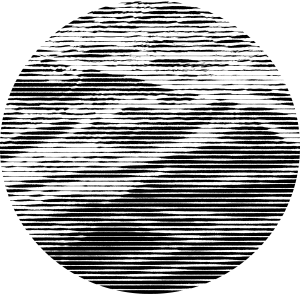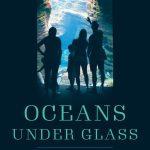Five Questions with the Editors of the Oceans in Depth Series
Humanity’s interaction with the ocean has spawned industries, exchanges, stories, and knowledge. The University of Chicago Press’s new book series, Oceans in Depth, puts the ocean at the center of our narratives about the past to explore different dimensions of our histories. The first book in the series was published last month. Oceans under Glass: Tank Craft and the Sciences of the Sea by Samantha L. Muka charts the development of aquariums throughout the twentieth century to show how this equipment has enhanced our knowledge of the marine environment. The second, forthcoming this spring, is Ocean Bestiary: Meeting Marine Life from Abalone to Orca to Zooplankton, written and illustrated by Richard J. King, an A-to-Z celebration of our ongoing quest to know the sea and its creatures.

Here, series editors Katharine Anderson and Helen M. Rozwadowski discuss the aims, ideas, and questions that guide their work.
Oceans in Depth explores the complex interactions between people and the sea. What can we learn from the oceans of the past?
First, we need to understand that oceans do, indeed, have a past. Western culture views the ocean as a timeless place that is—compared with the land—resistant to the impact of human actions. But throughout history, different cultures have forged distinct relationships with the sea. Recognizing ancient or more contemporary ocean-facing cultures makes us aware that our present, western posture toward the sea is, itself, the historical product of Enlightenment science, imperial power, and industrial technology. Our picture of oceans needs to include perspectives and traditions that challenge our conventional ideas about oceans as empty spaces.
Second, our understanding of geological, evolutionary, and environmental change has too often remained separate from efforts to understand the human past. For example, recent research in Micronesia and in the Mediterranean has suggested that seafaring developed much earlier than we had thought. These studies are inspired by the recognition that past sea levels were different than in the present, and they suggest that we look for evidence of human habitation in new places, including those now submerged. Our present experience of climate change, then, has prompted researchers to ask novel questions about what previous sea levels might have meant for human relationships with oceans.
Those are both reasons why it is important to tell ocean history, but you asked what we can learn from oceans of the past. Those past oceans are so deeply a part of many societies that we need to understand human-sea relationships to understand cultures and people in places like Oceania, Ireland, Japan, along coasts everywhere, and in many land-locked places as well. Across the world, oceans shape literature, history, archaeology, religion, and language. They offer material resources as well as connectivity or separation. They shape ideas about law and governance. The human connections to oceans have tightened over time and multiplied with industrialization and globalization. The opacity of oceans means that they act a bit like a mirror; the water’s surface reflects our ambitions, fears, or preconceptions.
Climate change and globalization continue to transform our planet. What kinds of questions should we ask about the history of the oceans, given the grave challenges of the present?
To begin, we need more questions, ones that acknowledge the oceans do have a history! But your question alludes to the problem of scale—big oceans, global economies, global environmental crisis—which is so significant. How do we ask questions that accustom us to see “big pictures” more readily? We think it’s not so much about expansive chronological sweeps or wide geographical settings in a book as it is about unexpected connections that show the complex relationships between oceans and us.
A nineteenth-century scientist, Charles Lyell, once proposed that the best observer of the planet would be an amphibious being who could move between the perspective of a sea dweller and a land dweller. Lyell’s comment has always fascinated us. He was speaking of the challenge of geology—how to conceive of immense physical features and vast swaths of time without being able to observe them under a microscope or in the lab—but of course, his larger point was about our terrestrial bias. And his answer was that we need intellectual imagination, a willingness to consider the boxes that limit our thinking.
Today, the need for our engaged imagination is even more pressing. We can list statistics about the size and depths of oceans, or pollution, or container shipping, or life forms, but we still find oceans a bit unreal, a bit removed from our existence, and literally hard to grasp. We need questions that challenge us to see the oceans’ materiality and their influences. How difficult it is to measure the oceans is one question, but then, also, we might ask which communities and people did that, and for what reasons? What happens, for example, to literary or cinematic images of the sea floor as technological access develops from diving bells to scuba to remote sensing? How are ideas of governance and management of oceans modified as technologies and imaginaries shift? The big picture of globalization and climate change demands intellectual imagination.
As series editors, how do you define historical writing?
We understand the historical in a broad sense. We appreciate the appeal and value of academic specializations, but sometimes those become barriers, especially when it comes to understanding the natural-human world in all its complexities. So we don’t want to identify the series exclusively with the academic discipline of history.
When we started thinking about this series, we wanted to broaden conversations and readership because so much interesting work about the oceans develops in separate niches. It flourishes under different names: blue humanities, science and technology studies, Indigenous studies, marine environmental history, Atlantic or Pacific or Mediterranean or Indian ocean studies, or history of biology. Outside academia, ocean history can be found in fields such as popular natural history, maritime museums, or contemporary filmmaking. The list could go on. It’s like a large house party, where the conversations are lively, but often take place in different rooms. You need a host (or two) circulating through!
But this breadth is even more critical when you think about readers. People who care about the ocean and want to understand it better don’t work solely in universities or the government, or live only along the coast. Many of us who reside in landlocked cities, without a view of the waves, are still profoundly aware of the importance of oceans as a part of nature, as a part of human experience, and as a threatened environment. Think of the current popular obsession with the octopus. Instead of seeing them as monsters of the deep, we now speculate about their intelligence, appreciate the aesthetics of their form, and consider them an emblem of profound otherness. Discovering this range of dimensions within many different ocean stories is the series’ goal.
How did you each become interested in the ocean? How has it shaped your research?
Anderson: I became interested from my work on Victorians and the weather. Weather was a sea captain’s subject, and by the time I finished that project, I knew I wanted to know more about oceanic environments. I started by writing about coral which was an object of great fascination for artists, missionaries, and poets as well as scientists. Then I did some work on voyage narratives. Now I am working on a book about oceans in the 1920s and 1930s. As an undergraduate, I was a literature-and-history major and then, like Helen, I was drawn to contextualist history of science in the 1990s because of its interdisciplinary spirit. By this point in my career, I have concluded that I am not very “disciplined”—I’ve never taught in a history department, just different cross-disciplinary programs and departments, like humanities, STS, or communications studies. That makes the range of the series sympathetic and compelling to me.
Rozwadowski: I discovered the ocean through my childhood on the southern shore of Lake Erie, swimming, beachcombing, and sailing. From the vantage of fresh water, I became an avid reader of maritime history and literature, and I leaped at the chance to experience ocean voyaging and oceanographic research on a traditionally rigged vessel during my university studies. That combination of science and voyaging appealed to me as a double major in biology and English. A course in the history of science seemed to offer a way to combine the seemingly disparate worlds of science and the humanities. Conducting oceanographic research anachronistically, on a square-topsail schooner, inspired me to ask questions about how the ocean sciences were conducted in the past and led me to graduate study in the history of science and technology. The indirect nature of my childhood knowledge of the ocean has profoundly shaped my scholarship, which looks at the role of imagination in people’s creation and use of knowledge about the ocean. I came to view my book, Fathoming the Ocean, as not just a history of ocean science but as ocean history, full stop. Since I wrote it, I’ve challenged the terrestrial bias of history by promoting ocean history and encouraging others to write it!
How can writers share their proposals and ideas with you?

Writers may submit book proposals to kateya@yorku.ca and helen.rozwadowski@uconn.edu.
The first book in the series, Oceans Under Glass, is available now from our website or your favorite bookseller.